We rarely get first dibs on a new car. When it arrives here, for mainstream brands at least, it becomes a Philippines-spec model most of the time since not all features and variants from the source country are carried over here. Case in point, when the Ford Ranger Raptor was launched here, it’s only available with the 2-liter bi-turbo diesel engine. Many fans are drooling for the one with the bigger 3-liter V6 gas, but right now that’s only available in our neighboring countries.
Lucky for us, we were able to drive that, and 2 more of Ford’s cars from other markets. They took select members of the Philippine motoring media to Sa Pa in Lào Cai, Vietnam. A representative from Ford Philippines said this is not a confirmation of the arrival of these variants since this was mainly an invitation drive from Ford Thailand. We were joined by media and distributor groups from other ASEAN countries to try out Ford’s different flavors in a private course made exclusively for this event.
Ford Everest Wildtrak
The first car assigned to us is the polarizing Ford Everest Wildtrak. It has the face of the Ranger with Wildtrak badge above the grille, at the edge of the hood. Some didn’t like it while some loved that look. As for me, it depends on the color. It looked best on white and the Wildtrak exclusive Luxe Yellow. Other exterior changes from the Everest Titanium+ include the cladding by the wheel wells to the rear bumper and the new design on the 20-inch wheels.
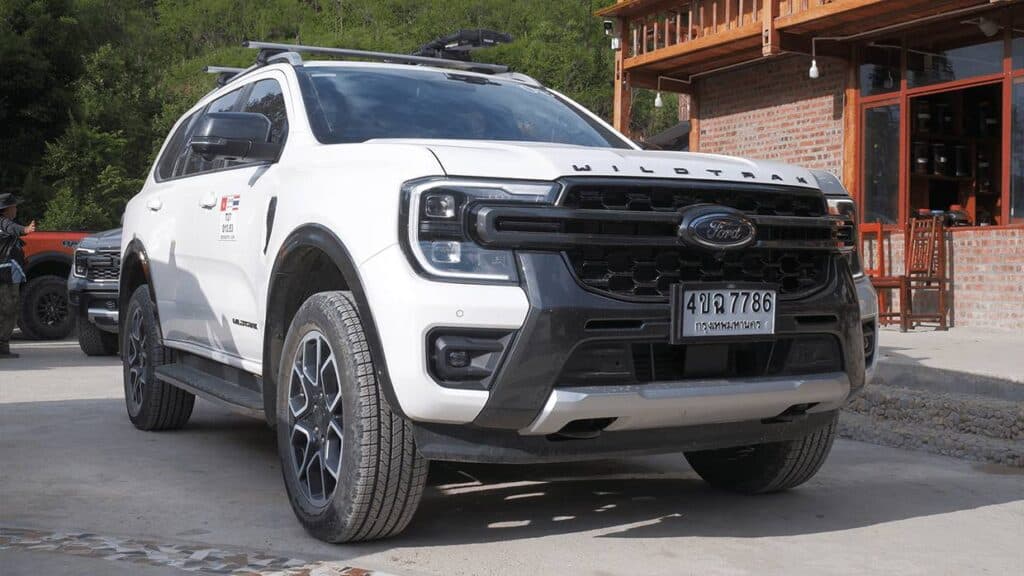
Inside, the only differentiation was the yellow stitching all over the cabin and the Wildtrak branding on the seats. All else was carried over from the Titanium+ 4×4 variant. I just wish that they put paddle shifters for this higher trim. I find it cumbersome to put my hand on the shifter for manual shifting during the drive on the mountain pass, instead of just on the steering wheel if there are paddle shifters.
Everything was also carried over mechanically from the Titanium+ as the Everest Wildtrak was running on a 2-liter bi-turbo diesel engine and 10-speed automatic transmission. That makes the Everest Wildtrak purely an aesthetic variant, but a rugged one at that. It’s perfect to those looking for a meaner looking Everest without losing its advanced features (sorry, Everest Sport).
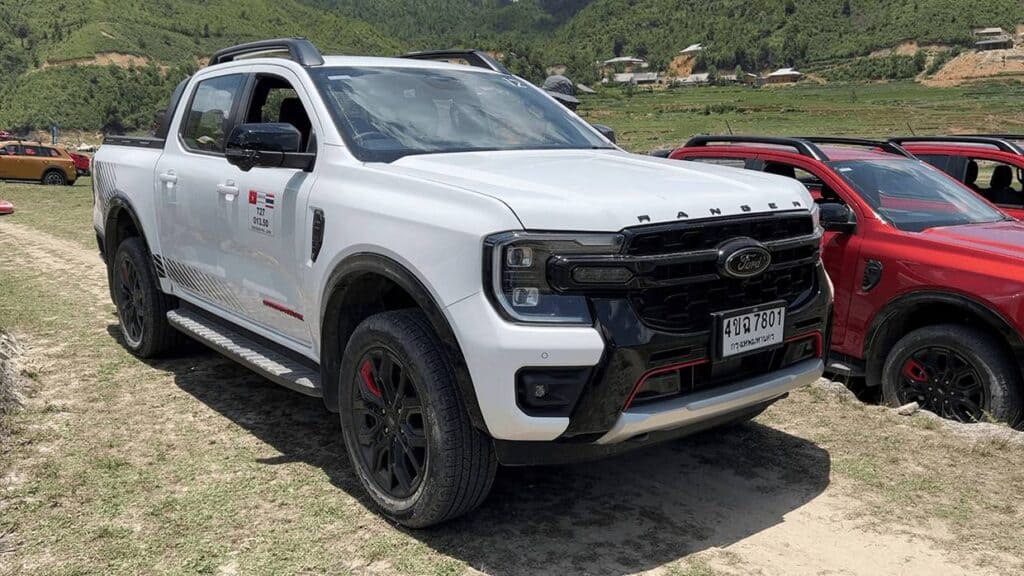
Ford Ranger Raptor 2.0
My main target for this drive was this, the 2-liter Ranger Raptor. During its launch last month in the Philippines there was a dirt course made to flaunt its capability. What’s missing there is a rocky situation that can further highlight the Ranger Raptor’s newfound toy – Trail Control.
The Trail Control is what stood out to me among the Ranger Raptor’s newfound advanced safety and driver assist features. It’s basically a low speed cruise control meant for crawling on off-road terrain, handling acceleration and braking so you can focus on steering. It can go as low as 1kph up to around 20kph. What’s great is it’s adaptive as well. If you encounter a bigger than usual rock that stopped you like what happened to me, the truck itself will increase its rpm just until you can overcome that, then go back to the set speed. No need to blip the throttle manually, and then brake, then focus on steering. The car does the power management itself. You can fake the look of the Raptor with your own Ranger but this Trail Control is something you cannot simply add-on, and more than justifies the price increase of this truck.
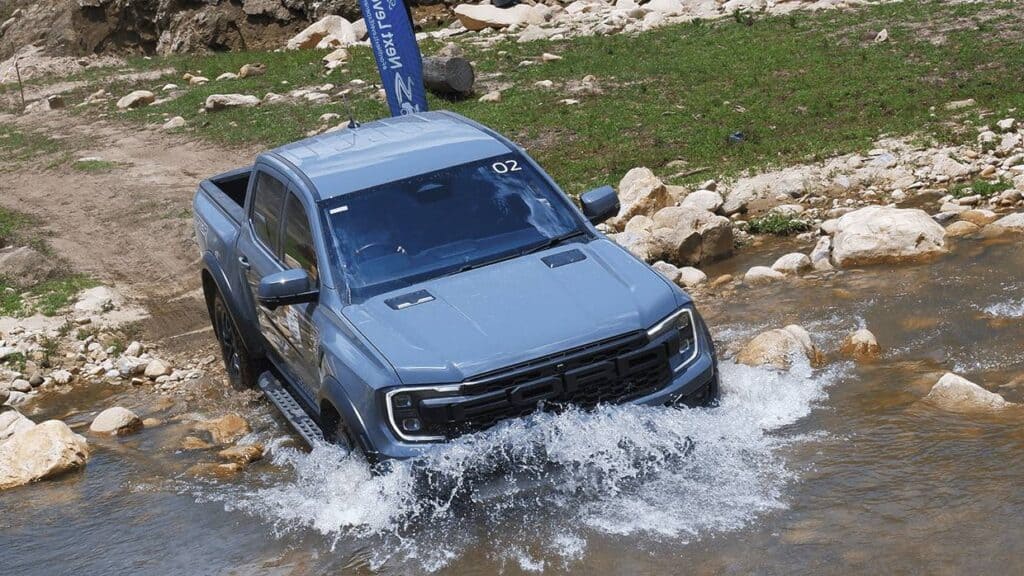
On a separate drive, I took the Ranger Raptor 2.0 out on the tight streets of Sa Pa, Vietnam to look for a picturesque backdrop and test how it will fare on-road. As far as my body remembers, this felt better than the Ranger Wildtrak when I drove it back in the Philippines. That’s not surprising given the difference in suspension. It’s much closer to driving a well-tuned SUV than a pickup with its ride comfort despite the lack of weight on the bed (if only it’s not as wide and as long). It might even be Ford’s best chance to snatch the ‘best riding comfort in a pickup’ away from the Nissan Navara. Add to that its safety features, driver assist aids, and lighter steering feel and the Ranger Raptor really becomes a solid deal for those who want to make this their daily steed.
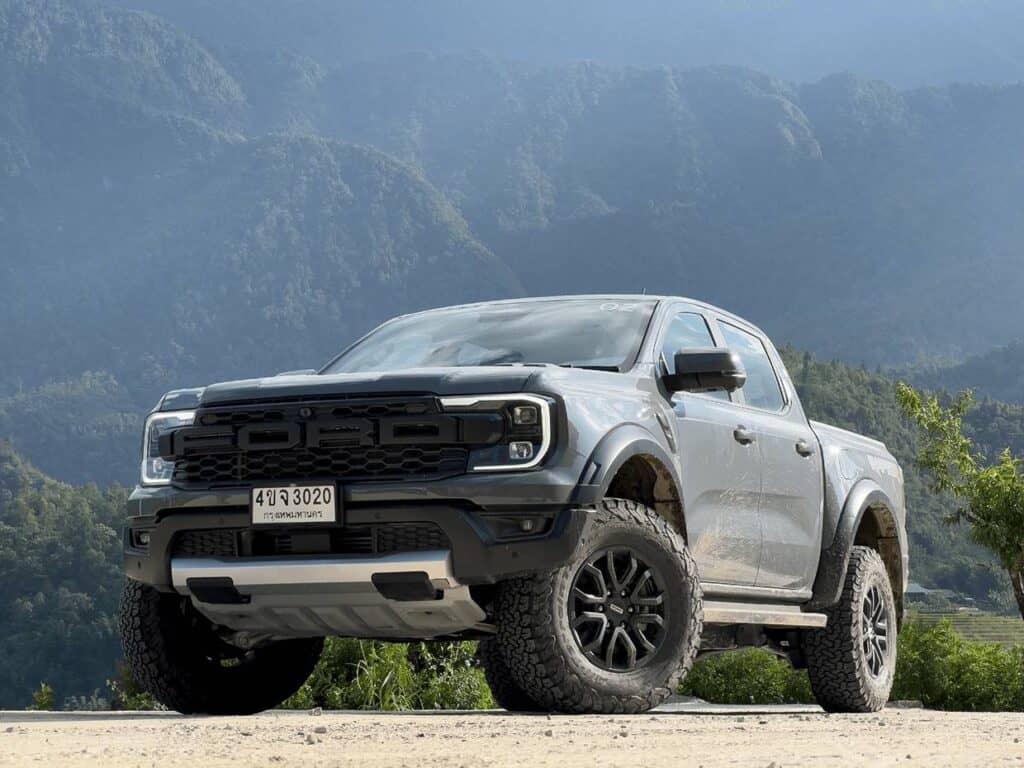
Ford Ranger Raptor 3.0
During the briefing for this drive, they mentioned that we were only assigned the Ranger Raptor 2.0 (the one we have in the Philippines) and the Everest Wildtrak. So I’m really glad when there were changes in the plan and we got to try the bigger, badder, gnarlier, Ranger Raptor 3.0 as well.
To be honest with you, I haven’t driven a car that has a 3-liter twin-turbo V6 gasoline engine that makes 397 horsepower and 583 Nm of torque. I was curious why there was clamor for this variant when the Ranger Raptor in the Philippines launched with ‘only’ a 2-liter bi-turbo. I didn’t understand the hype until I took this one for a spin – the difference was night and day.
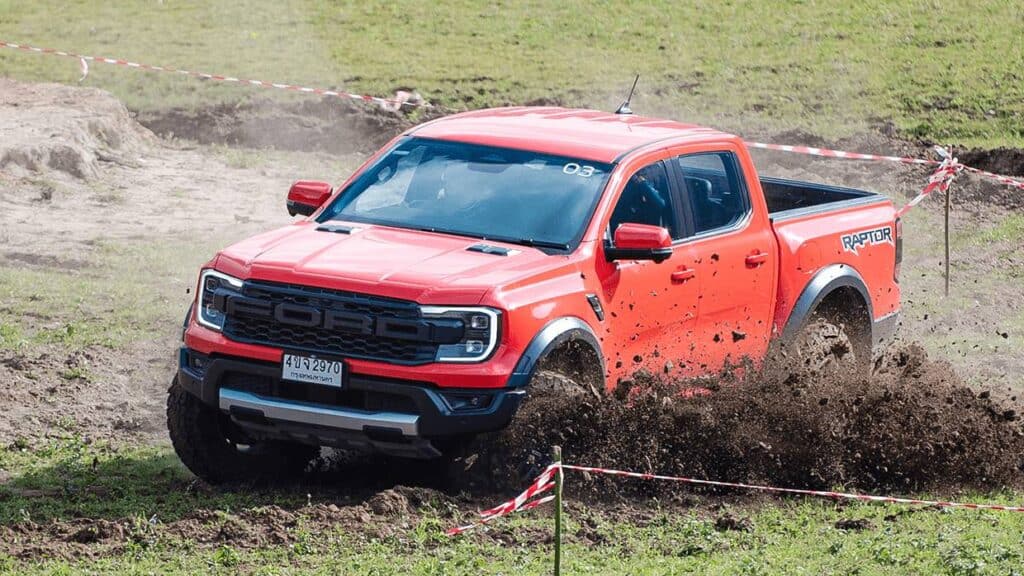
The Raptor 3.0 simply sped up with a bare hint of torque. The pin on the speedometer climbed up so fast that I was surprised I already needed to press on the brakes for the corner. There wasn’t much of the force that will bury you on your seat like what I’m used to in the Raptor 2.0, nor will you wait for the power. Blip the throttle and the V6 engine roars immediately with gusto. Bury your foot and it will unapologetically follow your every whim, kicking dirt up in the air. It’s a lot of power for sure but very easy to control.
What’s more astounding is its on-road behavior. Aside from a tad smoother suspension setup thanks to the FOX Live Valve shocks, the shifting is also noticeably better than the Raptor 2.0. They have the same 10-speed automatic but there’s no ‘breathing’ in the Raptor 3.0. Once it goes past 2,000 rpm, it will immediately go on to the next gear instead of staying there for a second or so before shifting. It changes once you’re on climbs where it goes past 2,000rpm but even there, the shifting is smooth like a baby’s butt.
There’s a big caveat with it though, albeit not surprising. The fuel economy of the Raptor 3.0 is horrendous. The trip computer was showing a range of only 200km with 3/4 still left in the tank.
And for those curious about the price, here it is. The Ranger Raptor 2.0 is 1,769,000 baht or P2,848,252 in direct conversion and yet we got it for only 2,339,000 srp when it arrived in the Philippines. On the other hand, the Raptor 3.0 is worth 1,919,000 baht or P3,089,766 in a direct conversion. If Ford Philippines brings it in and does the same pricing magic, it will surely be under the P3-M mark. But that’s a big IF.
Ford Ranger Stormtrak
Last of the bunch is the humble Ford Ranger Stormtrak. It’s made distinct with the Ranger emblem at the edge of the hood, red lining on the front bumper, side emblems, and on a single section on the wheels between the spokes.
There’s not much to it at first glance until you need to haul cargo on a whim. Usually if you want to make use of its roof rails, you have to buy an aftermarket rack that puts crossbars between those rails so you can put things on top. The Ranger Stormtrak skips that aftermarket step since it has hidden crossbars stowed inside the roof rail assembly.
Things get more interesting on the bed thanks to the movable sport bar. It can be moved back and forth by pressing any of the two grip handles it has. There’s even a stowed cargo bar that makes it aligned to the crossbars on the roof rails. This way you can haul long things like a small boat or surfboard without worrying about damage on the corner of the roof and rear windshield, provided you remove the antenna.
Again, among these Ford vehicles we’ve driven in Vietnam, only the Ranger Raptor 2.0 is available in the Philippines. No word if the other variants of the Everest, Ranger, and Ranger Raptor will make its way into our country. But who knows if you pray hard enough, or send enough emails to Ford Philippines, they may consider. No assurance though.

